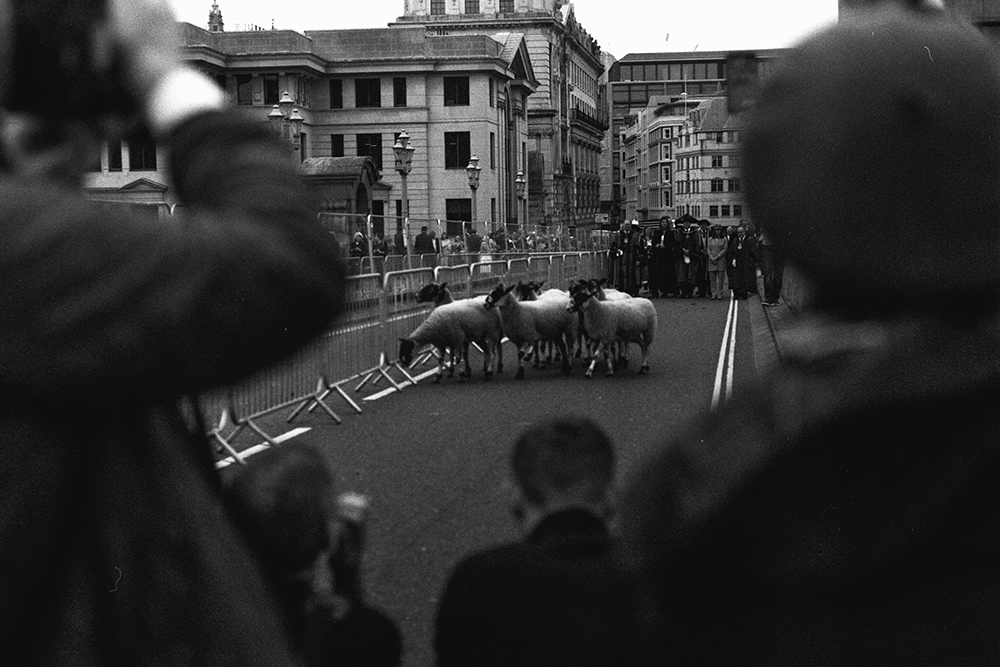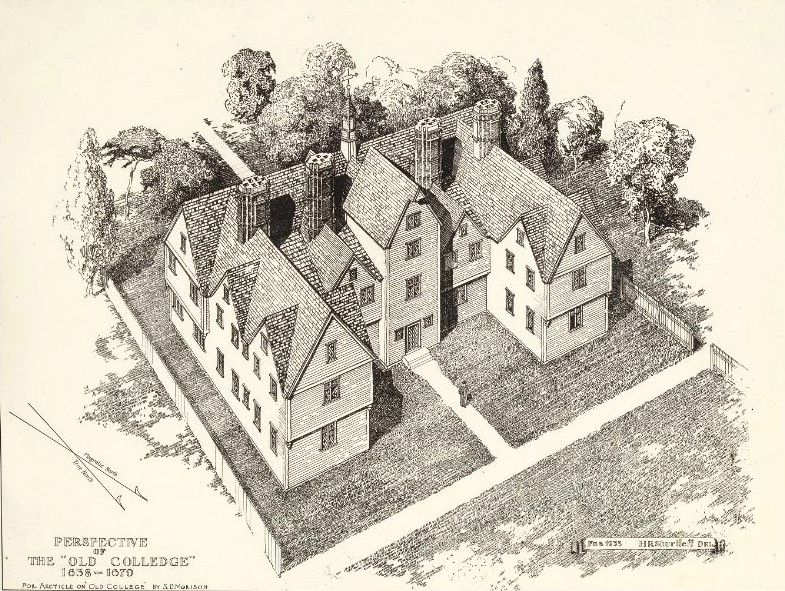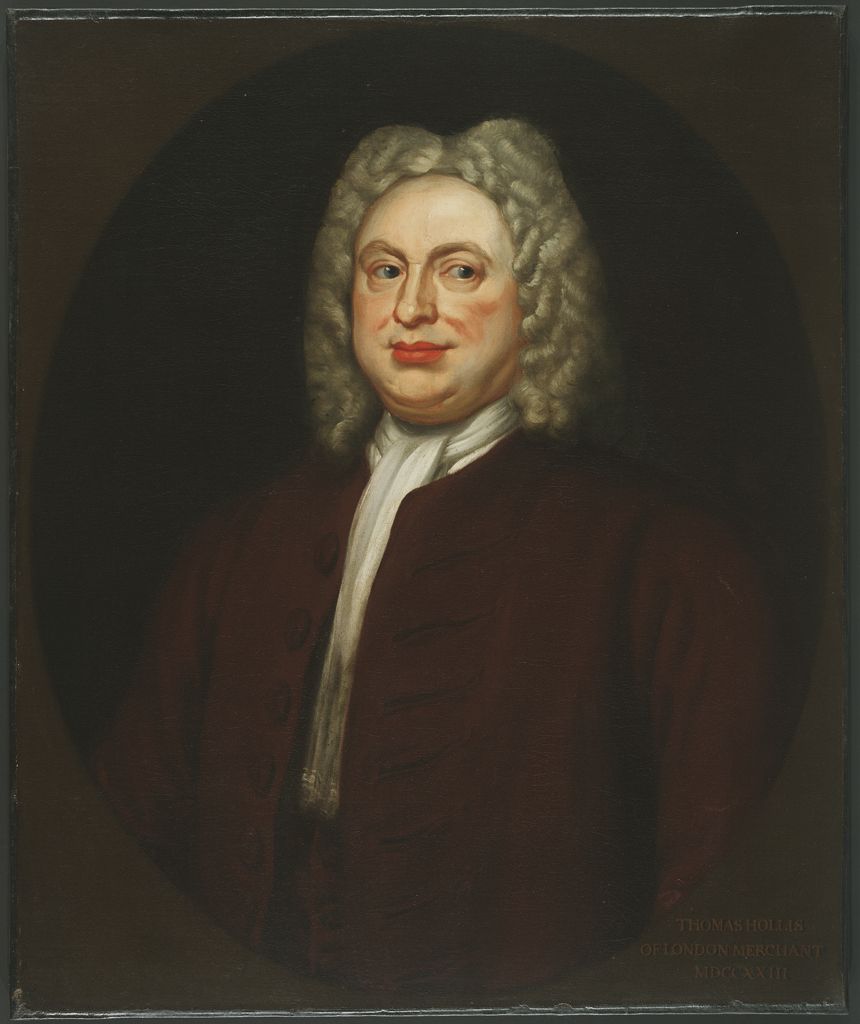|
Hollis Hospital
Hollis Hospital is an almshouse dating from 1703 in Sheffield, England. Thomas Hollis Thomas Hollis (1634–1718) was apprenticed to a John Ramsker, a cutler, and was sent to London in 1654 to manage Ramsker's wholesale cutlery business. Hollis became a dissenter and Baptist. Hollis prospered in London becoming a Freeman of the City of London and a member of the Worshipful Company of Drapers. He was noted for his philanthropy, particularly in his native Sheffield. He was associated with the building of New Hall, the first dissenter chapel in the city and in 1700 the building of a new, larger chapel. In 1703 Hollis bought New Hall and the adjoining house which he converted into Hollis Hospital. He was also a benefactor of St. Thomas' Hospital in London and Harvard College in Massachusetts. Hollis had four children, one of whom was Thomas Hollis (1659–1731) who continued his father's support of Harvard. Hollis Hospital The original Hollis Hospital was at the juncti ... [...More Info...] [...Related Items...] OR: [Wikipedia] [Google] [Baidu] |
Almshouse
An almshouse (also known as a bede-house, poorhouse, or hospital) was charitable housing provided to people in a particular community, especially during the medieval era. They were often targeted at the poor of a locality, at those from certain forms of previous employment, or their widows, and at elderly people who could no longer pay rent, and are generally maintained by a charity or the trustees of a bequest (alms are, in the Christian tradition, money or services donated to support the poor and indigent). Almshouses were originally formed as extensions of the church system and were later adapted by local officials and authorities. History Many almshouses are European Christian institutions though some are secular. Almshouses provide subsidised accommodation, often integrated with social care resources such as wardens. England Almshouses were established from the 10th century in Britain, to provide a place of residence for poor, old and distressed people. They were someti ... [...More Info...] [...Related Items...] OR: [Wikipedia] [Google] [Baidu] |
Sheffield
Sheffield is a city status in the United Kingdom, city in South Yorkshire, England, whose name derives from the River Sheaf which runs through it. The city serves as the administrative centre of the City of Sheffield. It is Historic counties of England, historically part of the West Riding of Yorkshire and some of its southern suburbs were transferred from Derbyshire to the city council. It is the largest settlement in South Yorkshire. The city is in the eastern foothills of the Pennines and the valleys of the River Don, Yorkshire, River Don with its four tributaries: the River Loxley, Loxley, the Porter Brook, the River Rivelin, Rivelin and the River Sheaf, Sheaf. Sixty-one per cent of Sheffield's entire area is green space and a third of the city lies within the Peak District national park. There are more than 250 parks, woodlands and gardens in the city, which is estimated to contain around 4.5 million trees. The city is south of Leeds, east of Manchester, and north ... [...More Info...] [...Related Items...] OR: [Wikipedia] [Google] [Baidu] |
Cutlery
Cutlery (also referred to as silverware, flatware, or tableware), includes any hand implement used in preparing, serving, and especially eating food in Western culture. A person who makes or sells cutlery is called a cutler. The city of Sheffield in England has been famous for the production of cutlery since the 17th century and a train – the ''Master Cutler'' – running from Sheffield to London was named after the industry. Bringing affordable cutlery to the masses, stainless steel was developed in Sheffield in the early 20th century. The major items of cutlery in Western culture are the knife, fork and spoon. These three implements first appeared together on tables in Britain in the Georgian era. In recent times, hybrid versions of cutlery have been made combining the functionality of different eating implements, including the spork (''sp''oon / f''ork''), spife (''sp''oon / kn''ife''), and knork (''kn''ife / f''ork''). The sporf or splade combines all three. Etymology ... [...More Info...] [...Related Items...] OR: [Wikipedia] [Google] [Baidu] |
Dissenter
A dissenter (from the Latin ''dissentire'', "to disagree") is one who dissents (disagrees) in matters of opinion, belief, etc. Usage in Christianity Dissent from the Anglican church In the social and religious history of England and Wales, and, by extension, Ireland, however, it refers particularly to a member of a religious body who has, for one reason or another, separated from the established church or any other kind of Protestant who refuses to recognise the supremacy of the established church in areas where the established church is or was Anglican.. Originally, the term included English and Welsh Roman Catholics whom the original draft of the Nonconformist Relief Act 1779 styled " Protesting Catholic Dissenters". In practice, however, it designates Protestant Dissenters referred to in sec. ii. of the Act of Toleration of 1689 (see English Dissenters). The term recusant, in contrast, came to refer to Roman Catholics rather than Protestant dissenters. Dissent from the Pre ... [...More Info...] [...Related Items...] OR: [Wikipedia] [Google] [Baidu] |
Baptist
Baptists form a major branch of Protestantism distinguished by baptizing professing Christian believers only (believer's baptism), and doing so by complete immersion. Baptist churches also generally subscribe to the doctrines of soul competency (the responsibility and accountability of every person before God), ''sola fide'' (salvation by just faith alone), ''sola scriptura'' (scripture alone as the rule of faith and practice) and congregationalist church government. Baptists generally recognize two ordinances: baptism and communion. Diverse from their beginning, those identifying as Baptists today differ widely from one another in what they believe, how they worship, their attitudes toward other Christians, and their understanding of what is important in Christian discipleship. For example, Baptist theology may include Arminian or Calvinist beliefs with various sub-groups holding different or competing positions, while others allow for diversity in this matter within the ... [...More Info...] [...Related Items...] OR: [Wikipedia] [Google] [Baidu] |
Freeman Of The City Of London
The Freedom of the City of London started around 1237 as the status of a 'free man' or 'citizen', protected by the charter of the City of London and not under the jurisdiction of a feudal lord. In the Middle Ages, this developed into a freedom or right to trade, becoming closely linked to the medieval guilds, the livery companies. In 1835 eligibility for the freedom of the City was extended to anyone who lived in, worked in or had a strong connection to the City. The freedom that citizens enjoy has long associations with privileges in the governance of the City. Whilst no longer carrying many substantive rights and largely existing as a tradition, the freedom is a pre-requisite for standing for election to the Common Council and Court of Aldermen of the City of London. The Lord Mayor of the City must first become an alderman, and hence must also be a freeman. There are multiple routes to gaining the freedom of the City of London. The original three routes to the freedom, via ... [...More Info...] [...Related Items...] OR: [Wikipedia] [Google] [Baidu] |
Worshipful Company Of Drapers
The Worshipful Company of Drapers is one of the 110 livery companies of the City of London. It has the formal name The Master and Wardens and Brethren and Sisters of the Guild or Fraternity of the Blessed Mary the Virgin of the Mystery of Drapers of the City of London. More usually known simply as the Drapers' Company, it is one of the historic Great Twelve Livery Companies and was founded during the Middle Ages. History An informal association of drapers had organized as early as 1180, and the first (Lord) Mayor of London in 1189, Henry Fitz-Ailwin de Londonestone, was believed to have been a Draper. The organisation was formally founded in 1361; it received a Royal Charter three years later. It was incorporated as a company under a Royal Charter in 1438 and was the first corporate body to be granted a coat of arms. The charter gave the company perpetual succession and a common seal. Over the centuries the original privileges granted by Royal Charter have been confirmed a ... [...More Info...] [...Related Items...] OR: [Wikipedia] [Google] [Baidu] |
Harvard College
Harvard College is the undergraduate college of Harvard University, an Ivy League research university in Cambridge, Massachusetts. Founded in 1636, Harvard College is the original school of Harvard University, the oldest institution of higher learning in the United States and among the most prestigious in the world. Part of the Faculty of Arts and Sciences, Harvard College is Harvard University's traditional undergraduate program, offering AB and SB degrees. It is highly selective, with fewer than five percent of applicants being offered admission in recent years. Harvard College students participate in more than 450 extracurricular organizations and nearly all live on campus—first-year students in or near Harvard Yard, and upperclass students in community-oriented "houses". History The school came into existence in 1636 by vote of the Great and General Court of the Massachusetts Bay Colony—though without a single building, instructor, or student. In 1638, the colleg ... [...More Info...] [...Related Items...] OR: [Wikipedia] [Google] [Baidu] |
Thomas Hollis (1659–1731)
Thomas Hollis (1659 – January 21, 1731)Hollis died in January 1730 by the Old Style calendar in use at the time, but in 1731 by New Style (modern) dating. was a wealthy English merchant and a benefactor of Harvard University. Benefactions As a Baptist and a Calvinist, Hollis required his donations to be used for directed purposes. For example, in 1721, he established the Hollis Chair of Divinity at Harvard, with a salary of £80 per year, with the stipulation that Baptists be included for consideration. This broadening constituted a form of dissent from strict adherence to the orthodoxy of the day, where New England's reform Protestantism was being buffeted by ripples and uncertainties generated by the Glorious Revolution of 1688/9. In 1726, he also endowed the Hollis Chair of Mathematics and Natural Philosophy with the same amount. Hollis also convinced his younger brothers, John and Nathaniel, to contribute substantially to Harvard and thus helped establish a legacy of civil ... [...More Info...] [...Related Items...] OR: [Wikipedia] [Google] [Baidu] |
Grade II Listed Building
In the United Kingdom, a listed building or listed structure is one that has been placed on one of the four statutory lists maintained by Historic England in England, Historic Environment Scotland in Scotland, in Wales, and the Northern Ireland Environment Agency in Northern Ireland. The term has also been used in the Republic of Ireland, where buildings are protected under the Planning and Development Act 2000. The statutory term in Ireland is " protected structure". A listed building may not be demolished, extended, or altered without special permission from the local planning authority, which typically consults the relevant central government agency, particularly for significant alterations to the more notable listed buildings. In England and Wales, a national amenity society must be notified of any work to a listed building which involves any element of demolition. Exemption from secular listed building control is provided for some buildings in current use for worship, ... [...More Info...] [...Related Items...] OR: [Wikipedia] [Google] [Baidu] |
Almshouses In South Yorkshire
An almshouse (also known as a bede-house, poorhouse, or hospital) was charitable housing provided to people in a particular community, especially during the medieval era. They were often targeted at the poor of a locality, at those from certain forms of previous employment, or their widows, and at elderly people who could no longer pay rent, and are generally maintained by a charity or the trustees of a bequest (alms are, in the Christian tradition, money or services donated to support the poor and indigent). Almshouses were originally formed as extensions of the church system and were later adapted by local officials and authorities. History Many almshouses are European Christian institutions though some are secular. Almshouses provide subsidised accommodation, often integrated with social care resources such as wardens. England Almshouses were established from the 10th century in Britain, to provide a place of residence for poor, old and distressed people. They were some ... [...More Info...] [...Related Items...] OR: [Wikipedia] [Google] [Baidu] |





_1.517_-_Drapers'_Hall_Garden%2C_1860.jpg)



